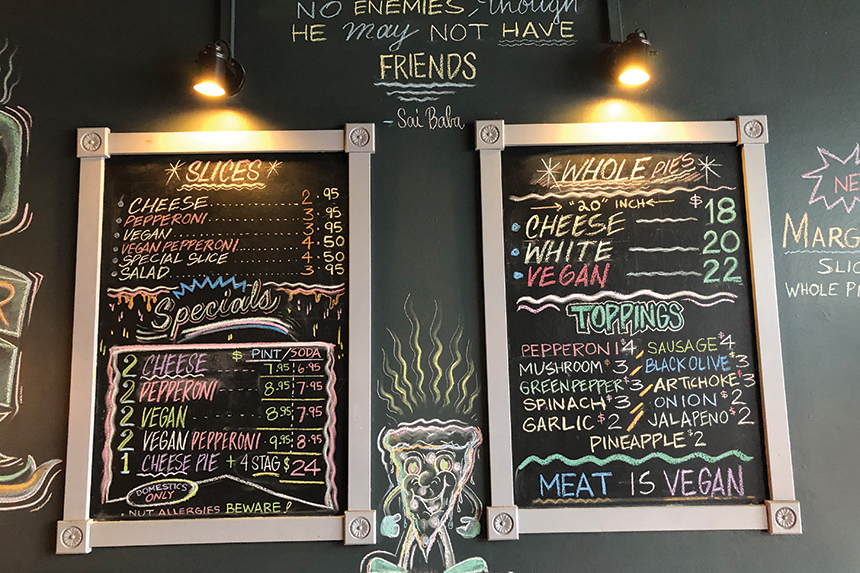Nick Bogacz shares a menu price raising strategy
In a perfect world, you’ve found the “sweet spot” for your menu prices before you even opened the doors of your new store. Unfortunately, it’s pretty much a given they won’t stay there, as factors that increase the cost of your goods regularly fluctuate.
For example, the ingredient that goes on all our pizzas is cheese, and it’s a commodity that increases and decreases in price every week. Imagine a gas station that sets the price for a year and never changes it. That would be crazy — just like it’s crazy for a pizzeria to never change menu prices.
To avoid doing that too often, I always try to build in a buffer to account for inflating costs. If I’m looking for a 30-percent food cost, I may price my menu to 29.5 percent to give some room for ingredient costs to increase without me raising my menu prices.
Over time, food costs go up and never get as low as they once were, and eventually, you’ll need to make up for it with a menu increase. My rule of thumb has always been anytime we print a new menu, it’s a good time to change prices. This means we usually have one mass increase annually and adjust other menu prices as needed through the year.
Of course, unexpected events occur that prompt mass price increases. A great example is the recent employee shortage, along with years of cries for wage increases. As explained in last month’s column, owners may have to increase employee pay now or face great consequences. With that pretext, alongside employee raises, we’ve actually executed two mass menu price increases this year, with the most recent being our largest increase in seven years.
The bigger price increase, in which we raised the price of our pizzas between 10-20 percent, hit on June 6. I would have been nervous about the customers’ reaction, but I’ve been down this avenue before. You may have one or two customers who say something, but if you increase when the price of everything else in the world is going up, it softens the blow. Fortunately, we have not had any blowback, and immediately we saw our cost of goods percentage decrease, which averages out our prime number when it is combined with our increased labor percentage.
Sometimes, you just have to pass things on to your customers if you want to stay in business and thrive. I always try to be “fair” — I’m a consumer, too, after all — but with a cheese market that is always fluctuating, along with the price of other food items increasing or in short supply monthly, it leaves us no choice but to raise our prices to guard against an unstable economy.
Once your prices are in check, the next thing to do is try to avoid doing it again for a while. One way to do that: negotiate with your distributors and vendors — and that’s what we’ll discuss in the next Building Blocks.
Nick Bogacz is the founder and president of Caliente Pizza & Draft House in Pittsburgh. Instagram: @caliente_pizza









